Feature Articles: Olympic and Paralympic Games Tokyo 2020 and NTT R&D—Technologies that Colored Tokyo 2020 Games
1. Overview
The NTT Yokosuka R&D Center was selected as one stop on the route of the Tokyo 2020 Olympic Torch Relay, which traveled the length and breadth of Japan. An event to welcome the torch to the center was managed by NTT. NTT research and development (R&D) laboratories recruited a wide range of staff from across several laboratories to plan and organize the event. A total of 18 people from 9 laboratories worked together as a study team to organize the event. The team decided to welcome the torch to the NTT Yokosuka R&D Center by inviting local residents to participate—with whom we have had many exchanges in the past.
The concept of the Tokyo 2020 Olympic Torch Relay was “Hope Lights Our Way.” Established in 1972 in Yokosuka, Japan, the NTT Yokosuka R&D Center has long been involved in exchanges with local residents through technology. Combining this background with the concept of the Torch Relay, we decided on the theme of “Connecting ages, connecting communities, and connecting technologies” for the event.
In accordance with that theme, we selected senior researchers as initial torchbearers who would pass the torch to young researchers who would in turn pass it to local students. In addition, elementary-school students from nearby schools (Awata and Iwato Elementary Schools in Yokosuka City) were invited as spectators to cheer on the Torch Relay. The entire Torch Relay, including the spectators, was designed to connect ages and communities. Students from Kanagawa Prefectural Yokosuka High School, which had been interacting with the NTT Yokosuka R&D Center through programs such as “Super Science High School,” were also selected as local student torchbearers.
On the basis of the theme of connecting communities and technologies, this event aimed to provide an opportunity for elementary-school students to experience the communication technology of the NTT Yokosuka R&D Center through cheering. The aim of the event was to provide a new experience of cheering for the Torch Relay. We developed a cheering-production system using voice-recognition communication technology that enables the cheers of elementary-school students to be visualized and transmitted to the torchbearers. To expose the students to such technology, we introduced a paper-cup microphone that they could make themselves using commercially available paper cups, magnets, and coils and use as an input device for the cheering-production system. Before the event, we asked the students to make their own paper-cup microphones. By making the microphones themselves, the students had a chance to learn the principles of communication by which sound is transmitted by a magnet and coil.
In March 2020, in the midst of these preparations, it was decided to postpone the Torch Relay and the Olympic and Paralympic Games for one year due to the spread of the novel coronavirus (COVID-19). Nevertheless, members of the study team organizing the event continued to prepare to welcome the torch to the NTT Yokosuka R&D Center. In March 2021, the Torch Relay started as scheduled; however, two weeks before our event, due to continuing spread of COVID-19 infections, the Kanagawa prefectural government decided to take the Torch Relay off public roads in the prefecture. Consequently, the Torch Relay event at the NTT Yokosuka R&D Center was cancelled. Although it was decided to cancel the event, all the members of the study team had one goal in mind, to create memories for the elementary-school students who had participated in making their paper-cup microphones. With that goal in mind, we worked together and immediately started planning an alternative event. Since we could not hold a group-type event at the NTT Yokosuka R&D Center, we decided to take the cheering-production system to the Awata and Iwato elementary schools and hold a similar Torch Relay cheering-experience event on those premises. The paper-cup microphones, which was an idea of the members of the study team, has the advantages of not only preventing oral droplets from spreading but also amplifying voices without the need for shouting. From that viewpoint, we were convinced that we could hold the event safely even in the midst of the pandemic. When we consulted with the elementary schools about our plan, they readily agreed to hold the event in the gymnasium at Awata Elementary School and in the audiovisual room at Iwato Elementary School. The participants were sixth graders. The event was simultaneously held at both schools on June 29, which was the date the Torch Relay was originally scheduled to be held (Fig. 1). The total number of participants was 107, including 61 from Awata Elementary School and 46 from Iwato Elementary School.
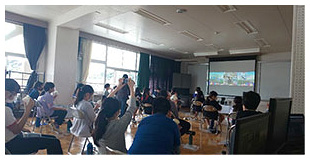
Fig. 1. The cheering-experience event at Iwato Elementary School.
2. Cheering-production system
The cheering-production system visualized the voices of the students through paper-cup microphones by using voice-recognition communication technology. The configuration of the system is shown in Fig. 2. To obtain the sound of a student’s voice, each student’s paper-cup microphone was connected to his/her smartphone. The voice collected by the paper-cup microphone was sent to the voice-recognition communication network through the smartphone ((1) in Fig. 2). Through the voice-recognition communication network, the speech content was converted into characters and output during the communication. The speech content output from the voice-recognition communication network was displayed on a projector at the event venue that can also be seen by the torchbearers ((2) in Fig. 2). We improved the recognition accuracy by limiting the recognition to two specific cheering words, “ganbare!” (“Go for it!”, “Come on”, etc.) and “faito!” (lit. “fight!”). The number of times each cheering word was uttered was also counted, and from the results of the counting, the image projected by the projector at the venue and the cheers collected with the paper-cup microphones and output to the loudspeakers were visualized and transmitted to the torchbearers (Fig. 3).
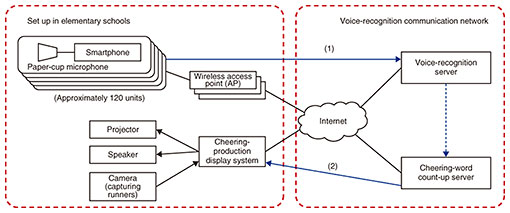
Fig. 2. Overview of cheering-production-system configuration.

Fig. 3. Example of displayed cheering words and number of times the words were uttered (The center of the screen is a composite display of an actual runner’s image.).
3. Technology
3.1 Voice-recognition communication technology
The signal-to-noise ratio of the speech collected with paper-cup microphones is low, and the frequency of the band required for speech drops. Therefore, the failure to recognize phonemes (sound units such as the vowels /a/, /i/, /u/, /e/, and /o/) posed a challenge to implementing the cheering-production system. Therefore, we developed a learning model and tuned it to the characteristics of a paper-cup microphone. For this event, it was important to recognize the specified cheering word without omission. Therefore, we were able to improve the cheering experience by limiting the number of words to be recognized and tuning the model by prioritizing reproduction rate (sensitivity) over relevance rate (accuracy).
We asked the elementary-school students to make their own paper-cup microphones for transmitting their cheers to the voice-recognition communication network. The creation of the paper-cup microphones was part of the technology-education program that was implemented in the children’s science class held at the NTT Yokosuka R&D Center Open House in 2012.
For this cheering-experience event, all students had to complete their paper-cup microphones within the time allotted by the school, i.e., two periods of 120 minutes. With that allocated time in mind, the study-team members repeated trials, identified steps that would take time, and devised ways such as omitting work steps requiring scissors and prepared an all-you-need kit. All the students completed their microphones within the allocated time. A scene from the day of the event is shown in Fig. 4.
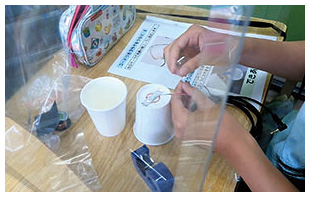
Fig. 4. A snapshot of a student making a paper-cup microphone.
On the day of the event, the procedure was as follows. On completing their paper-cup microphones, each student, in order of finishing, connected the microphone to their smartphone and recorded their voice on the smartphone. Their recorded voices were then played back from the speaker, and the operation of the cheering-production system was checked. The students were able to enjoy learning about the mechanism of voice communication, for example, when their voice was actually played back from the speaker, we heard them exclaim “Ooh!” and “Aah!”
4. Results
During the cheering-experience event, teachers from the school ran with torches around classrooms and gymnasiums, and when each torch-bearing teacher reached the next teacher, they conducted a simulated “torch kiss” by touching the tips of their torches. The simulated Torch Relay lasted about 15 minutes, during which the students continued cheering while desperately trying to keep their voices down to prevent droplet infection. Although the cheers were not loud, they were amplified by the paper-cup microphones and became louder, and the two cheering words were counted about 9000 times and displayed while the torchbearers were running. After the event, all of the participating students wrote their impressions (in a completely free format) with comments such as, “I was so happy when I could make a sound with the paper-cup microphone,” “I could speak with a normal voice even though my voice came from a microphone,” and “It was amazing to cheer with the paper-cup microphone just like with a real microphone.” We were amazed to see that the cheering experience was not only fun but also led to an interest in technology. We heard the students’ interest in the fundamentals of technology with comments such as “I want to know why it is the way it is.”
This event was evaluated as having value in terms of not only regional exchange but also education. The school principals said, “I think it was good for learning that various communication technologies are being researched at local facilities” (Principal Kaneko, Awata Elementary School) and “It was very significant in regard to career education to be exposed to NTT’s research and technology” (Principal Haraguchi, Iwato Elementary School).
5. Concluding remarks
The planned regional event of the Torch Relay in the form of inviting elementary-school students to the NTT Yokosuka R&D Center was not possible. However, from making paper-cup microphones to actual cheering, the elementary-school students actively experienced a simulated relay, and we believe that we were able to reach our goal set out in our original theme of “Connecting ages, connecting communities, and connecting technologies.” We believe that the exposure to the Torch Relay helped build momentum for the Tokyo 2020 Games. To be a research institute that continues to develop together with the community, we will continue to connect with the local community through technology.
Acknowledgments
We thank the teachers and students of Awata Elementary School and Iwato Elementary School in Yokosuka City for understanding the value of this event and participating in it. We also thank the Kanagawa Prefectural Sports Bureau, Yokosuka City Policy Promotion Department, Kanagawa Prefectural Police Security Department, and Kanagawa Prefectural Yokosuka High School for their cooperation in the preparation of the Torch Relay.
NTT is an Olympic and Paralympic Games Tokyo 2020 Gold Partner (Telecommunication Services).
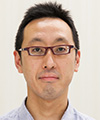 |
- Yusuke Ichikawa
- Senior Research Engineer, Cyber-World Laboratory, NTT Human Informatics Laboratories.
He received a B.E. and M.E. in measurement engineering from Keio University, Kanagawa, in 1995 and 1997, and Ph.D. in informatics from Shizuoka University in 2020. He joined NTT Multimedia Network Laboratories in 1997. Since 1998, he has been researching and developing recommendation systems. He is a senior member of the Information Processing Society of Japan (IPSJ) and received the 2005 and 2019 IPSJ Yamashita SIG Research Award.
|
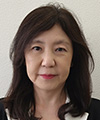 |
- Yuki Yoshida
- Research Engineer, NTT Human Informatics Laboratories.
She received a B.Sc. and M.Sc. from the University of Tsukuba. She joined NTT and engaged in R&D of human interface. In 2019, she joined the 2020 Epoch-Making Project, where she has been engaged in service promotion to celebrate the Tokyo 2020 Games.
|
